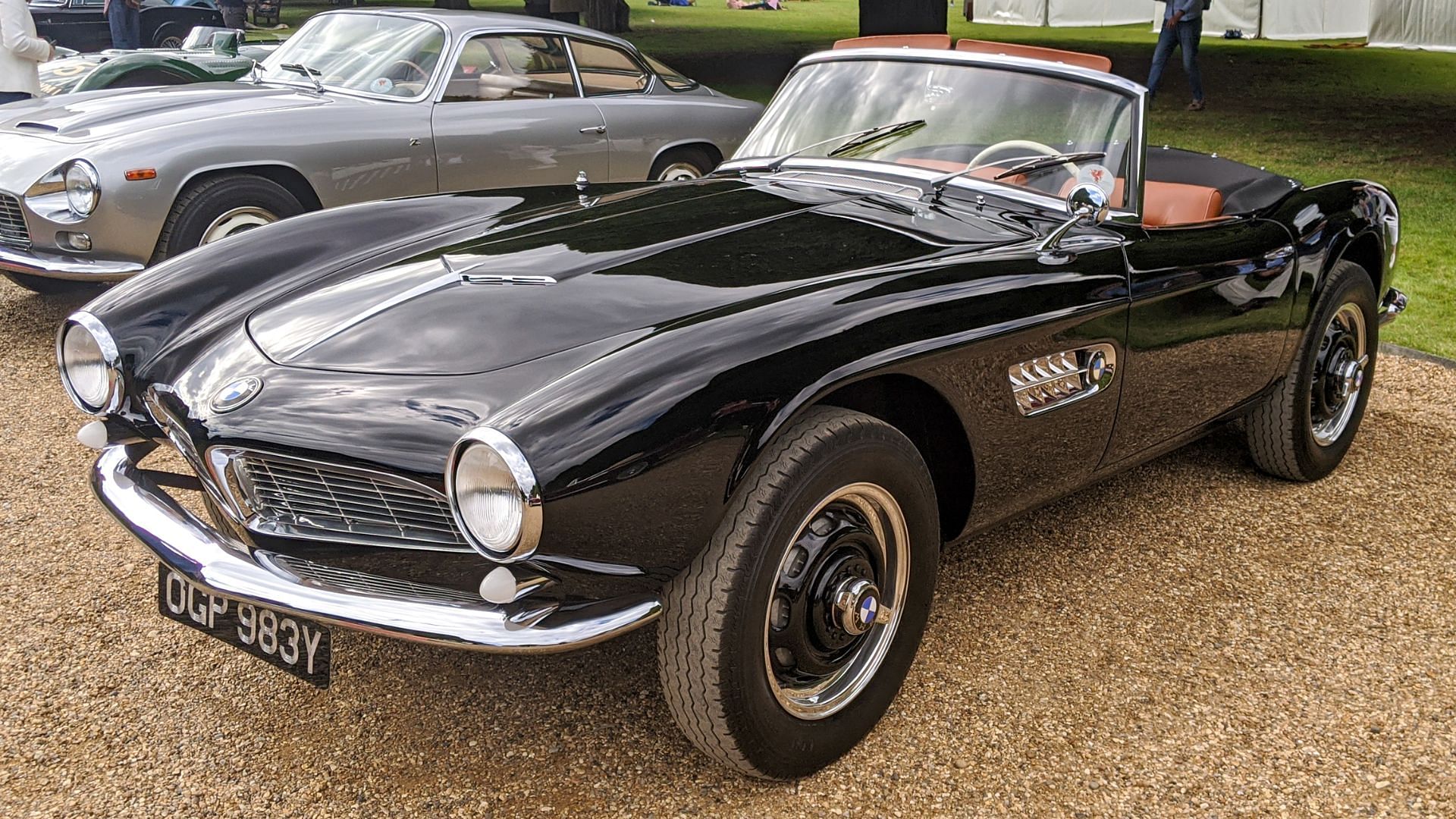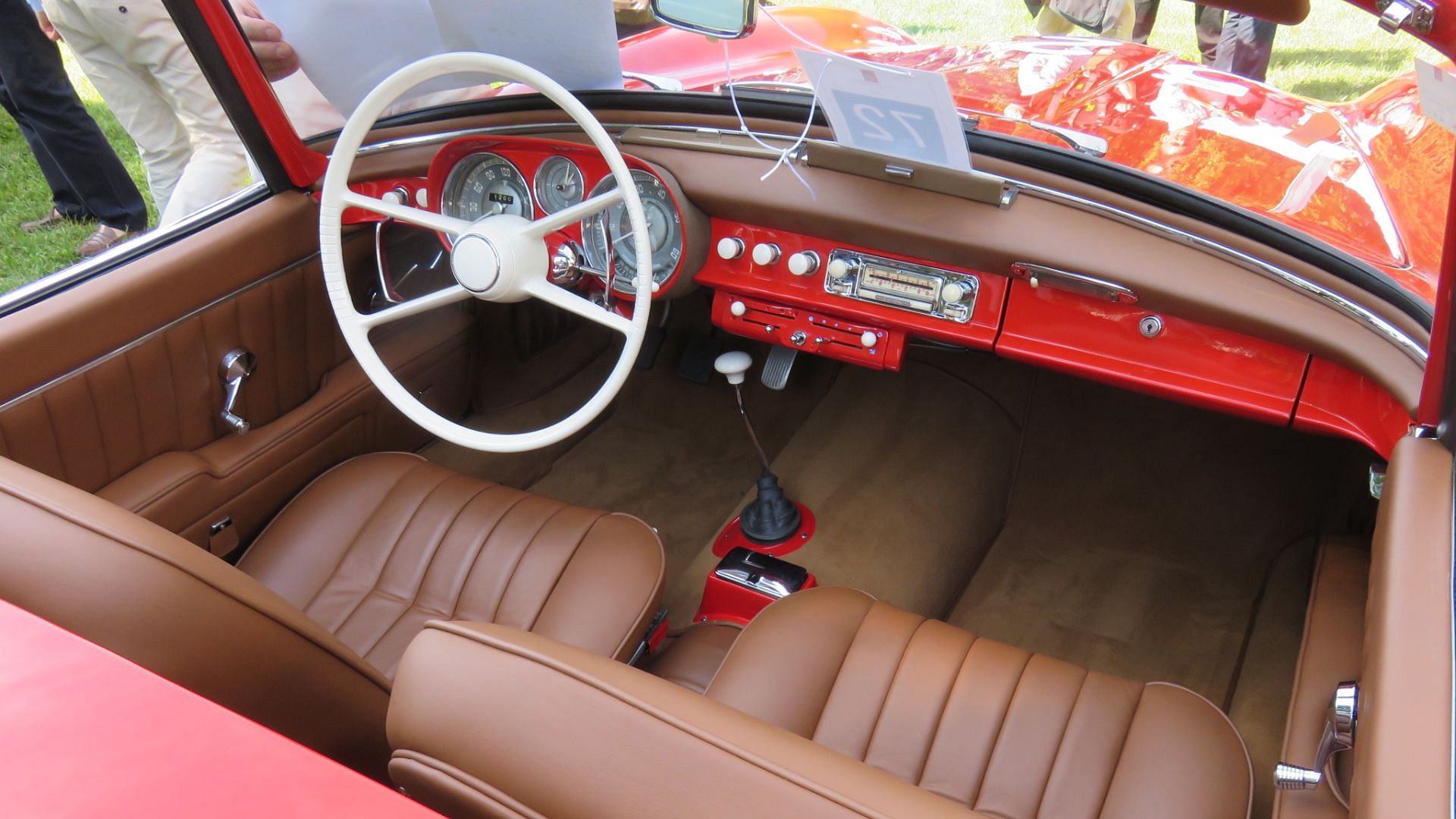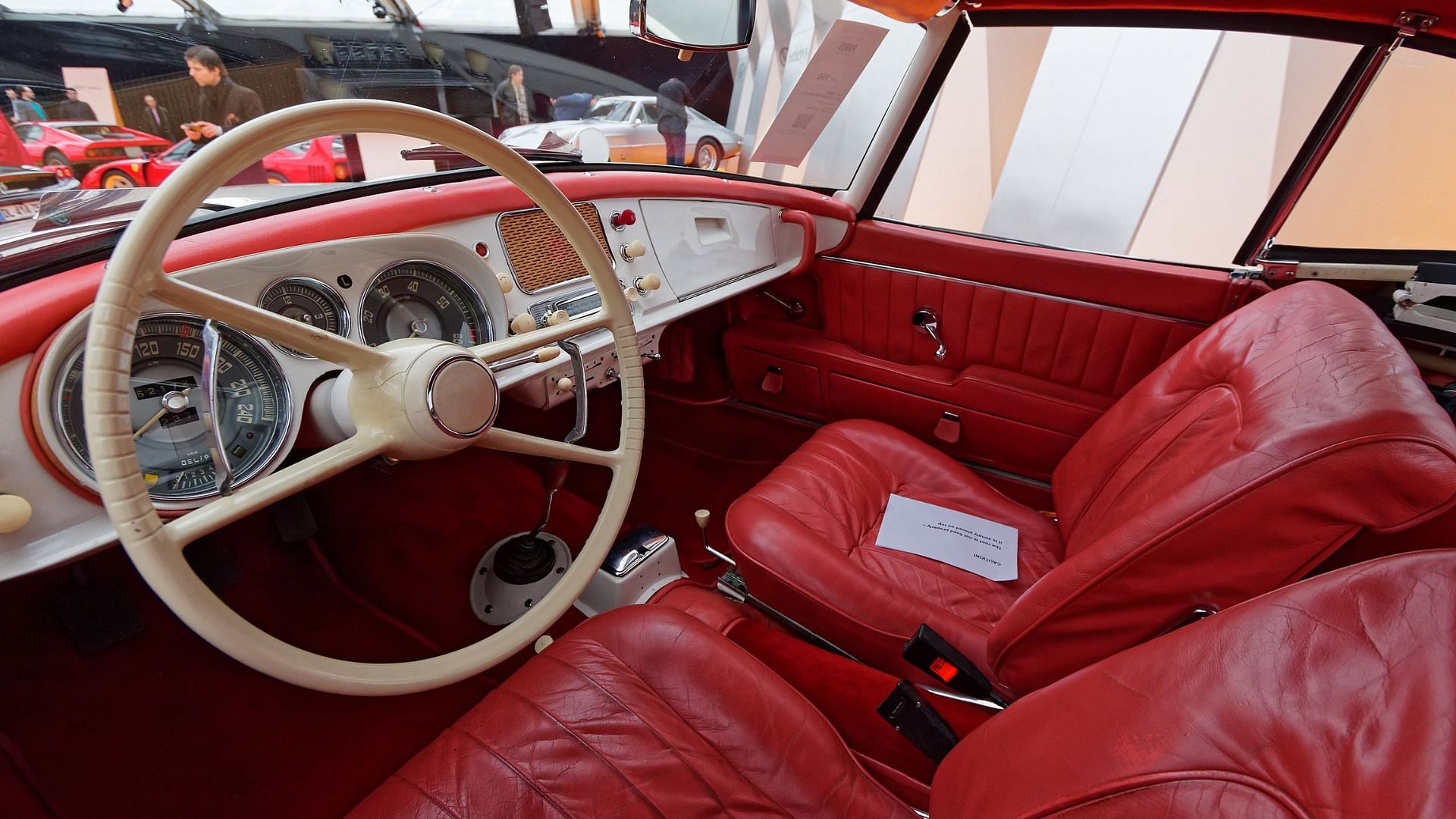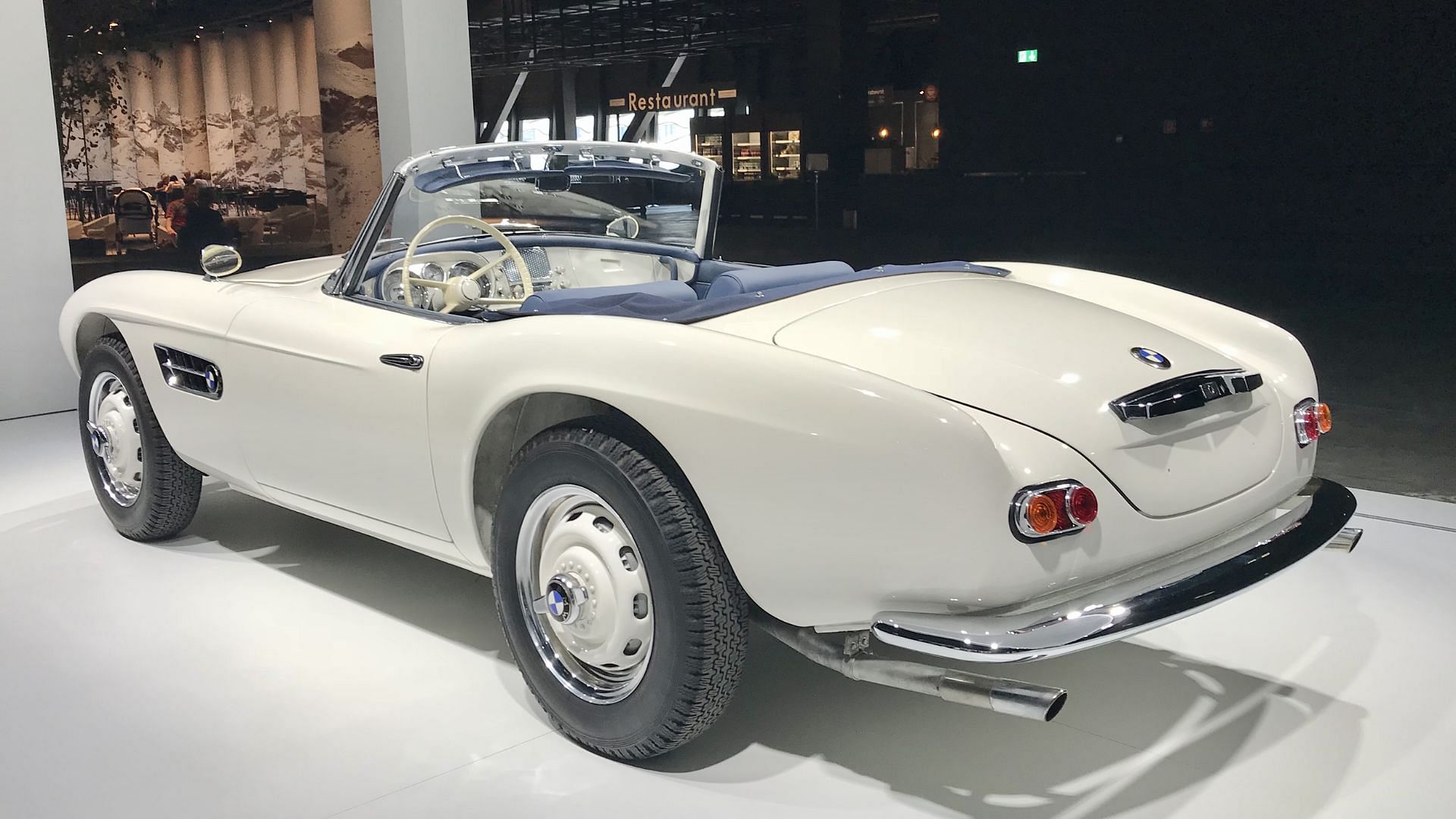The BMW 507: Once a Failure, Now a Multi-Million Dollar Classic
The BMW 507 was an outcome of BMW filling the gap between the more expensive Mercedes-Benz 300SL and the cheaper Triumph and MG counterparts. Post World War II, the automakers were pushing for new technologies and aiming to keep the same readily available for the masses. The 507 Roadster however couldn’t make it big and ended up being too expensive for that time forcing BMW to limit the production to 252 cars.
Published May 31, 2024

BMW 507 History
Sports Cars from the mid-50s proved to be expensive such as the Mercedes-Benz 300 SL or the affordable ones that lacked the desired performance. As such, Max Hoffman, an American importer of luxury European automobiles during the 1950s, convinced BMW to design and make a convertible version of the popular 501 and 502. After presenting the initial designs, Hoffman rejected them due to the lack of adequate appeal, compelling Beemer to appoint another designer.
After its successful design and development, the BMW 507 was launched with an aim of 5,000 annual production units. Post-launch, the car had some celebrity owners such as Elvis Presley, John Derek, Hans Stuck, and Georg "Schorsch" Meier. Even though the car was taken by such famous personalities, the higher production cost and steep pricing made it less popular among other buyers.
Design of the BMW 507
 1958 BMW 507 3.3 Front - Source Chelsea Jay, CC BY-SA 4.0, via Wikimedia Commons
1958 BMW 507 3.3 Front - Source Chelsea Jay, CC BY-SA 4.0, via Wikimedia Commons
One of the primary points for BMW to even consider developing the 507 was Mark Hoffman’s plan to undercut the even more steeply-priced Mercedes-Benz 300 SL. In the beginning, the rolling chassis was designed using the readily available components by Fritz Fiedler who had several achievements under his wing.
After the chassis was developed, Ernst Loof was given the responsibility to design the body of the car and this is where things changed. Hoffman rejected the early designs claiming they weren’t appealing enough. Hence, the legendary Albrecht von Goertz was appointed to complete the design and he did an excellent job. The 507’s design went on to inspire the later models which are the BMW Z3, the BMW Z4, and the BMW Z8.
 1958 BMW 507 Interior - Source Arnaud 25, CC BY-SA 4.0, via Wikimedia Commons
1958 BMW 507 Interior - Source Arnaud 25, CC BY-SA 4.0, via Wikimedia Commons
The 507 was built on the 503’s platform, the latter being the 2+2 grand tourer designed by Goertz himself. The Grand Tourer’s chassis was cut short by 111 inches and was reinforced with thicker steel as well. The unique fact about the 507 is that the body was crafted out of aluminum by hand and none of the cars produced are the same in precision.
At first, a 29.1-gallon fuel tank was welded behind the rear seats which affected the passenger capacity and boot space as well. This resulted in the smell of the fuel in the cabin for models made in '56 and early '57. BMW fixed the issue with the Series II by designing a fuel tank of 17.4 gallons and placing it around the spare wheel.
 1957 BMW 507 Roadster Serie II - Source Thesupermat, CC BY-SA 4.0, via Wikimedia Commons
1957 BMW 507 Roadster Serie II - Source Thesupermat, CC BY-SA 4.0, via Wikimedia Commons
The interior of the 507 was made cozy with fine attention to detail as well. The seats were wrapped in leather and the doors had premium soft padding with steel knobs for manual window operation. The dashboard was fitted with two big dials which housed all the necessary measurement gauges along with the speedometer and the tachometer. Among the few hundred models produced, a majority of them were convertible while only a few were hard top models with the hardtop being removable.
Engine & Performance of the BMW 507
The physical dimensions and the sleek profile of the BMW 507 might not show it, but it has a V8 heart. The 507 is, in fact, powered by the first V8 motor produced by the German marque and it seems Beemer was all in favor of using aluminum alloy for the roadster.
 1958 BMW 507 Engine - Source Wikisympathisant, CC BY-SA 4.0, via Wikimedia Commons
1958 BMW 507 Engine - Source Wikisympathisant, CC BY-SA 4.0, via Wikimedia Commons
The motor is made from aluminum alloy and displaces 3.2 liters in capacity. Some of the general specs of the motor include a set of dual 32NDIX two-barrel carburetors from Zenith, a polished combustion chamber surface, high-lift camshafts, and its oil pump which is chain-driven. With these mechanical jargons going under the hood, the engine produces 150 horsepower allowing the roadster to hit 60 mph in under 11.2 seconds and achieve a top speed of 125 mph. Transmission duties are handled by a close ratio of 4-speed manual transmission.
Pricing of the BMW 507
Coming to the price of the car, BMW initially aimed at pricing the car within $5,000 to $6,000 since it was required to bridge the gap between the cheaper Triumph and MG cars and the Benz 300 SL. However, the final production model along with the hefty production costs pushed the price tag to $10,000.
 1958 BMW 507 Rear - Source Ank Kumar, CC BY-SA 4.0, via Wikimedia Commons
1958 BMW 507 Rear - Source Ank Kumar, CC BY-SA 4.0, via Wikimedia Commons
While the price wasn’t a big deal for the celebrity owners, the general shoppers weren’t appealed by the price tag at all. As such, the car was limited to only 252 units and had a short production run of three years. Well because of that, the 1957 BMW 507 in good condition demands a value of around $1.6 Million in 2024. The Series II model in May 2021 was sold for $2.2 Million by Gooding & Company pointing towards the skyrocketed value of the car. In another auction held by Bonhams in 2018, John Surtees' stunning 1957 BMW 507 Roadster created ripples in the market after it was sold for $4.8 Million (£3.8 Million).
Write a comment
Comments
No Comments Yet









